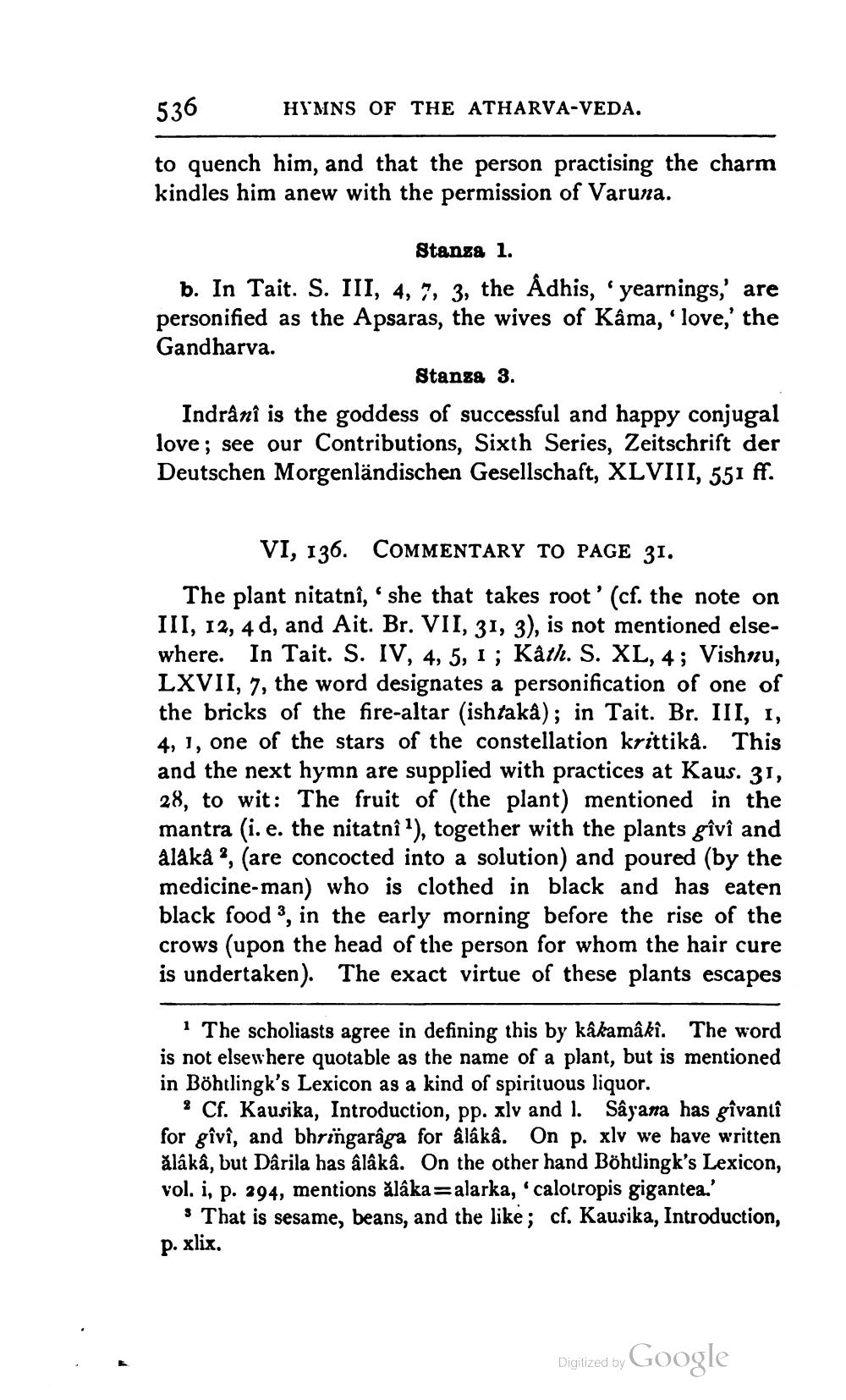________________
536
HYMNS OF THE ATHARVA-VEDA.
to quench him, and that the person practising the charm kindles him anew with the permission of Varuna.
Stanza 1. b. In Tait. S. III, 4, 7, 3, the Adhis, 'yearnings,' are personified as the Apsaras, the wives of Kâma, 'love,' the Gandharva.
Stanza 3. Indrânî is the goddess of successful and happy conjugal love ; see our Contributions, Sixth Series, Zeitschrift der Deutschen Morgenländischen Gesellschaft, XLVIII, 551 ff.
VI, 136. COMMENTARY TO PAGE 31. The plant nitatnî, she that takes root' (cf. the note on III, 12, 4 d, and Ait. Br. VII, 31, 3), is not mentioned elsewhere. In Tait. S. IV, 4, 5, 1 ; Kåth. S. XL, 4; Vishnu, LXVII, 7, the word designates a personification of one of the bricks of the fire-altar (ishtaka); in Tait. Br. III, 1, 4, 1, one of the stars of the constellation krittika. This and the next hymn are supplied with practices at Kaus. 31, 28, to wit: The fruit of (the plant) mentioned in the mantra (i. e. the nitatnî"), together with the plants gîvî and alaka , (are concocted into a solution) and poured (by the medicine-man) who is clothed in black and has eaten black food, in the early morning before the rise of the crows (upon the head of the person for whom the hair cure is undertaken). The exact virtue of these plants escapes
The scholiasts agree in defining this by kakamâkî. The word is not elsewhere quotable as the name of a plant, but is mentioned in Böhtlingk's Lexicon as a kind of spirituous liquor.
3 Cf. Kausika, Introduction, pp. xlv and I. Sâyana has givantî for gîvî, and bhringarâga for âlâkâ. On p. xlv we have written åláka, but Dârila has âlâkâ. On the other hand Böhtlingk's Lexicon, vol. 1, P. 294, mentions alikasalarke, 'calotropis gigantea.”
• That is sesame, beans, and the like ; cf. Kausika, Introduction,
p. xlix.
Digized by Google




